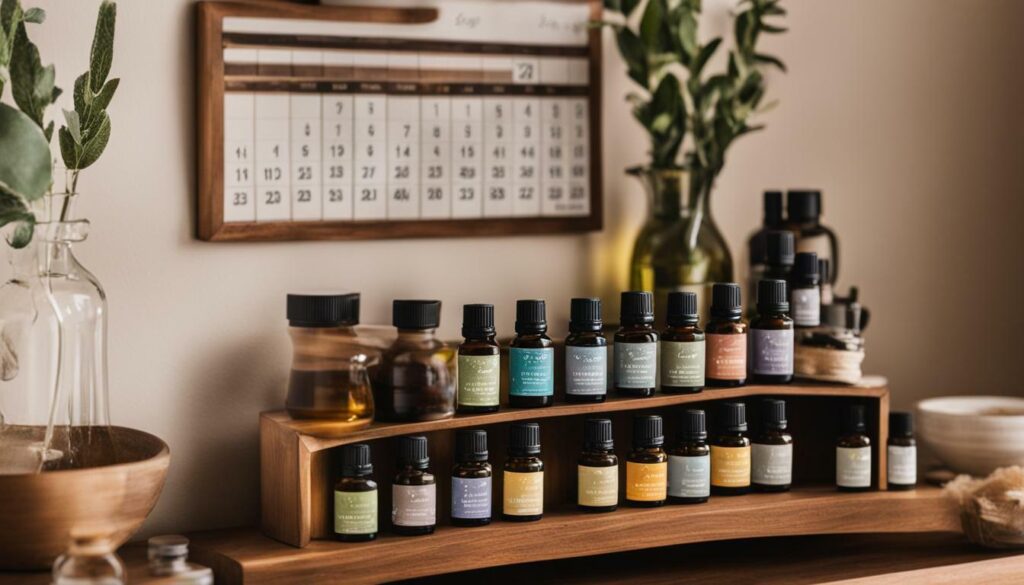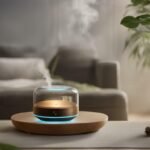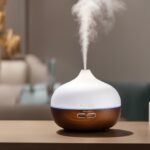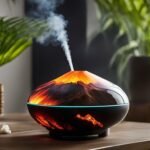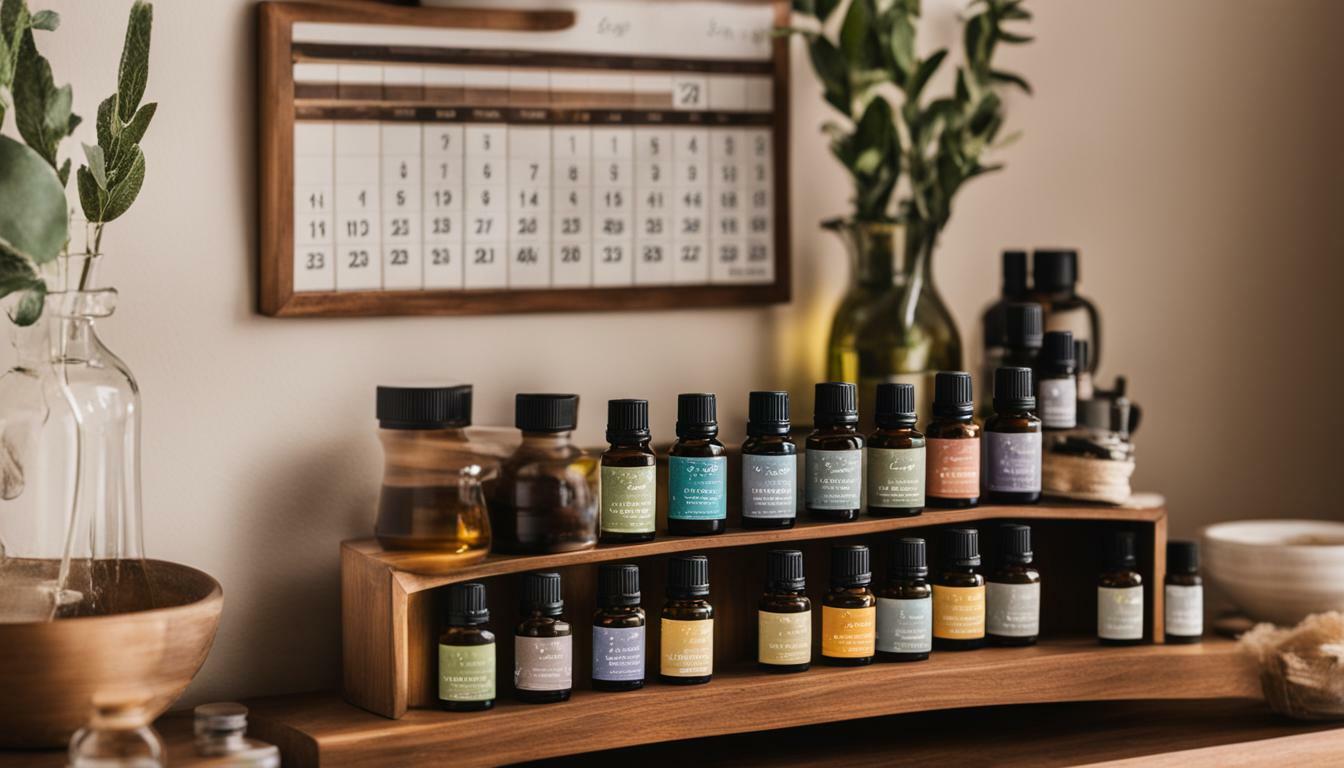
If you’re wondering how long an oil diffuser can last and how to make the most of its lifespan, you’ve come to the right place. Oil diffusers have become increasingly popular in recent years, thanks to their ability to create a soothing and fragrant atmosphere in any space. However, it’s essential to understand the lifespan of these devices and how to effectively use them to ensure maximum efficiency and longevity.
Factors Affecting the Lifespan of Oil Diffusers
Several factors come into play when determining how long an oil diffuser will last. The lifespan of an oil diffuser can vary depending on the type of diffuser, the quality of the oil used, and the care taken to maintain it.
According to Homesick, a 100 ml reed diffuser can last at least one month, but with proper care, it can last up to three to four months. The number of reeds used, the quality of the oil, and the design of the bottle can all impact the lifespan of a reed diffuser. Using natural reeds, reducing the number of reeds, and flipping them less frequently can help prolong the fragrance. Additionally, placing the diffuser in a location with good air circulation and away from direct sunlight or drafty areas can prevent the oil from evaporating too quickly.
Another important consideration is the maintenance of the reed diffuser. Reed diffusers should not be diluted with water, as this can affect the effectiveness of the fragrance. When changing fragrances, it is recommended to replace the reeds as well. Dust can accumulate on the reeds over time, causing them to clog and inhibit proper diffusion. According to some sources, a good quality reed can last approximately six months, but should be changed if the fragrance weakens or becomes clogged with dust. When selecting reeds, it is advisable to choose longer ones for containers double the height size to prevent tipping over.
In the case of other types of oil diffusers, such as Nest diffusers, they typically release scent for about three months before needing to add more oil or switch the reed sticks, as mentioned by another source. Each type of oil diffuser has its own specific lifespan, so it is important to follow the manufacturer’s instructions and recommendations for optimal use.
| Factors | Impact on Lifespan |
|---|---|
| Number of reeds | Affects the diffusion rate and longevity of the fragrance |
| Quality of oil | Affects the intensity and longevity of the fragrance |
| Design of bottle | Affects the evaporation rate of the oil |
| Air circulation and location | Affects the rate of evaporation and diffusion |
By considering these factors and implementing the recommended tips for care and maintenance, the lifespan of an oil diffuser can be prolonged, allowing you to enjoy your favorite scents for a longer period of time.
Reed Diffusers Lifespan
Reed diffusers can be a popular choice for long-lasting fragrance, but how long do they actually last? The lifespan of a reed diffuser can vary depending on several factors such as the number of reeds used, the quality of the oil, and the design of the bottle. According to Homesick, a 100 ml reed diffuser can last at least one month, but with proper care, it can last up to three to four months.
It is important to consider the type of reeds used in the diffuser. Using natural reeds is recommended as synthetic reeds may not be as effective in absorbing and diffusing the fragrance. To extend the lifespan of a reed diffuser, reducing the number of reeds can help slow down the evaporation process and make the fragrance last longer.
Another tip is to flip the reeds less frequently. While flipping the reeds can help to enhance the fragrance, doing it too often can accelerate the evaporation, leading to a shorter lifespan. Placing the diffuser in a location with good air circulation and away from direct sunlight or drafty areas can also help prolong its lifespan.
When changing fragrances, it is advised to replace the reeds as well. This ensures that the new fragrance is not compromised by any remnants of the previous scent. A good quality reed can last approximately six months, but it is important to note that reeds should be changed if the fragrance weakens or becomes clogged with dust. When selecting reeds, it is recommended to choose longer ones for containers that are double the height, as this helps prevent tipping over and allows for a more consistent diffusion of the fragrance.
| Factors Affecting Reed Diffuser Lifespan |
|---|
| Number of reeds used |
| Quality of the oil |
| Design of the bottle |
| Type of reeds used (natural vs synthetic) |
| Frequency of reed flipping |
| Placement of the diffuser (air circulation, sunlight exposure) |
Tips to Make Reed Diffusers Last Longer
To maximize the lifespan of your reed diffuser, follow these simple tips:
- Use natural reeds: Natural reeds tend to absorb and distribute fragrance better than synthetic reeds. Opt for natural reeds to ensure a longer-lasting scent.
- Reduce the number of reeds: Instead of using all the reeds provided with your diffuser, try using fewer. This allows the fragrance oil to last longer as it is dispersed more slowly.
- Flip the reeds less frequently: While it may be tempting to flip the reeds every day for a stronger scent, doing so can cause the fragrance to evaporate more quickly. Instead, flip the reeds once a week or as needed to maintain a consistent fragrance.
- Place the diffuser in a good location: Choose a location with good air circulation to enhance the diffusion of the scent. Avoid placing the diffuser in direct sunlight or near drafty areas, as these factors can cause the fragrance to degrade more rapidly.
Remember that reed diffusers should not be diluted with water, as this can dilute the fragrance and shorten its lifespan. Additionally, it is recommended to replace the reeds when changing fragrances to ensure a fresh and effective scent.
Choosing the Right Reed Size
The size of the reeds can also impact the diffusion rate and overall lifespan of the diffuser. For taller containers, it is important to select longer reeds to prevent the diffuser from tipping over and to effectively distribute the fragrance. Consider using reeds that are double the height of the container for optimal performance.
By following these tips and guidelines, you can enjoy the pleasant aroma of your reed diffuser for a longer period, creating a more inviting and fragrant atmosphere in your space.
| Source | Lifespan of Reed Diffusers |
|---|---|
| Homesick | 1-4 months depending on care |
| Unknown Source | Approximately 6 months with good quality reeds |
| Nest | Approximately 3 months before needing to add more oil or switch reeds |
Reed Diffuser Maintenance and Care
Proper maintenance and care are essential for keeping your reed diffuser performing optimally for a longer period. With the right techniques, you can extend the lifespan of your reed diffuser and continue enjoying the delightful fragrance it provides.
First and foremost, using natural reeds can significantly enhance the longevity of your diffuser. These reeds are more porous and effectively absorb the fragrance oil, resulting in a slower evaporation rate. It’s also recommended to reduce the number of reeds used in the diffuser. By using fewer reeds, you can control the intensity of the scent and make the fragrance last longer.
Another key maintenance tip is to flip the reeds less frequently. While it may be tempting to flip them every day, doing so can accelerate the evaporation process. To extend the lifespan of your reed diffuser, flip the reeds once a week or whenever you notice the scent fading.
Placement is crucial when it comes to reed diffusers. Ideal locations include areas with good air circulation but away from direct sunlight. Sunlight can cause the fragrance oil to degrade faster, shortening the diffuser’s lifespan. Additionally, avoid placing the diffuser in drafty spaces as the airflow can also impact how quickly the oil evaporates. By finding the perfect spot in your home, you can ensure a longer-lasting reed diffuser experience.
| Tip | Duration |
|---|---|
| Use natural reeds | Longer lifespan |
| Reduce the number of reeds | Control intensity and prolong scent |
| Flip reeds once a week | Slow down evaporation |
| Avoid direct sunlight | Prevent degradation of oil |
| Avoid drafty spaces | Optimize air circulation |
Other Types of Oil Diffusers
While reed diffusers are a popular choice, there are other types of oil diffusers available as well. These alternative options offer different mechanisms for dispersing fragrance into the air, allowing for a variety of preferences and needs. Below are some of the other types of oil diffusers that you may consider:
- Ultrasonic Diffusers: These diffusers use ultrasonic vibrations to break down essential oils and water into a fine mist, which is then released into the air. They often come with adjustable settings for mist intensity and timer options.
- Heat Diffusers: Heat diffusers use heat, whether from a candle flame or an electric heat source, to gently warm the essential oils and release their aroma into the room. They are known for providing a stronger scent throw.
- Nebulizing Diffusers: Nebulizing diffusers work by atomizing essential oils into tiny particles, without the need for water or heat. These diffusers are often considered more potent and provide a strong and immediate fragrance.
- Plug-in Diffusers: Perfect for smaller spaces, plug-in diffusers are compact and easy to use. They are designed to be plugged directly into an electrical outlet and release fragrance continuously.
Each type of oil diffuser has its own advantages and considerations. It’s important to choose the one that suits your preferences and fits the specific requirements of your space.
Choosing the Right Type of Diffuser
When selecting an oil diffuser, consider factors such as the size of the area you want to scent, the intensity of fragrance you desire, and any special features or functionalities you may prefer. Additionally, it’s important to keep in mind the maintenance requirements and the availability of compatible oils and refills for the diffuser you choose.
Remember, whichever type of oil diffuser you choose, proper care and regular maintenance are crucial to ensure their longevity. By following the manufacturer’s instructions and taking the necessary steps to prolong the lifespan of your chosen diffuser, you can enjoy the benefits of a beautifully scented space for months to come.
| Type of Diffuser | Advantages | Considerations |
|---|---|---|
| Reed Diffusers | Easy to use, no heat or electricity required, long-lasting fragrance | May require frequent flipping of reeds, limited scent throw in larger spaces |
| Ultrasonic Diffusers | Adjustable settings, mists essential oils into the air, humidifies the room | Regular cleaning required, may not be suitable for fragrance-sensitive individuals |
| Heat Diffusers | Provides a stronger scent throw, no water needed, can be used with any type of essential oil | Heat may alter the therapeutic properties of essential oils, may pose a fire risk |
| Nebulizing Diffusers | Immediate and strong aroma, no water or heat required, preserves the therapeutic properties of essential oils | Can be noisy, uses oils more quickly, may not be suitable for small spaces |
| Plug-in Diffusers | Compact and portable, continuous fragrance release, no maintenance required | May not be as long-lasting as other types, limited fragrance options |
Conclusion
In conclusion, the lifespan of an oil diffuser can vary depending on several factors, but with proper care and maintenance, you can extend its usability and enjoy long-lasting fragrance.
According to Homesick, a 100 ml reed diffuser can last at least one month, but with proper care, it can last up to three to four months. Factors such as the number of reeds used, the quality of the oil, and the design of the bottle can affect the lifespan of a reed diffuser.
To make a reed diffuser last longer, it is recommended to use natural reeds, reduce the number of reeds, flip the reeds less frequently, and place the diffuser in a good location with good air circulation. It is also advised to keep the diffuser away from sunlit areas and drafty spaces. Reed diffusers should not be diluted with water, and the reeds should be replaced when changing fragrances.
Another source mentions that a good quality reed can last approximately six months, and the reeds should be changed if the fragrance weakens or becomes clogged with dust. Considering the size of the reed is also important, as longer reeds should be selected for containers double the height size to prevent tipping over. Additionally, Nest diffusers typically release scent for about three months before needing to add more oil or switch the reed sticks.
FAQ
How long does an oil diffuser last?
The lifespan of an oil diffuser can vary depending on factors such as the size of the diffuser, the quality of the oil, and how it is used. Reed diffusers can last anywhere from one to four months, while other types of diffusers may have different lifespans.
What factors can affect the lifespan of an oil diffuser?
Several factors can impact the lifespan of an oil diffuser. These include the number of reeds used, the quality of the oil, the design of the bottle, and the location of the diffuser. Proper care and maintenance can also play a role in extending the lifespan of the diffuser.
How long do reed diffusers typically last?
Reed diffusers can last anywhere from one to four months. With proper care and maintenance, a 100 ml reed diffuser can last up to three to four months. However, factors such as the number of reeds used, the quality of the oil, and the design of the bottle can affect the lifespan.
How can I make my reed diffuser last longer?
To prolong the lifespan of a reed diffuser, it is recommended to use natural reeds, reduce the number of reeds, flip the reeds less frequently, and place the diffuser in a location with good air circulation. It is important to avoid sunlight and drafty areas, and never dilute the diffuser oil with water. Replacing the reeds when changing fragrances is also advised.
How should I maintain and care for a reed diffuser?
Proper maintenance and care can help ensure the longevity of a reed diffuser. It is important to keep the diffuser away from direct sunlight and drafty areas. Reeds should be replaced if the fragrance weakens or becomes clogged with dust. Cleaning the bottle and reeds with warm water and soap can also help maintain the effectiveness of the diffuser.
Are there other types of oil diffusers with different lifespans?
Yes, there are other types of oil diffusers that may have different lifespans. Each type of diffuser operates differently and may require specific care and maintenance. It is best to refer to the manufacturer’s instructions for accurate information on the lifespan of different oil diffuser types.

